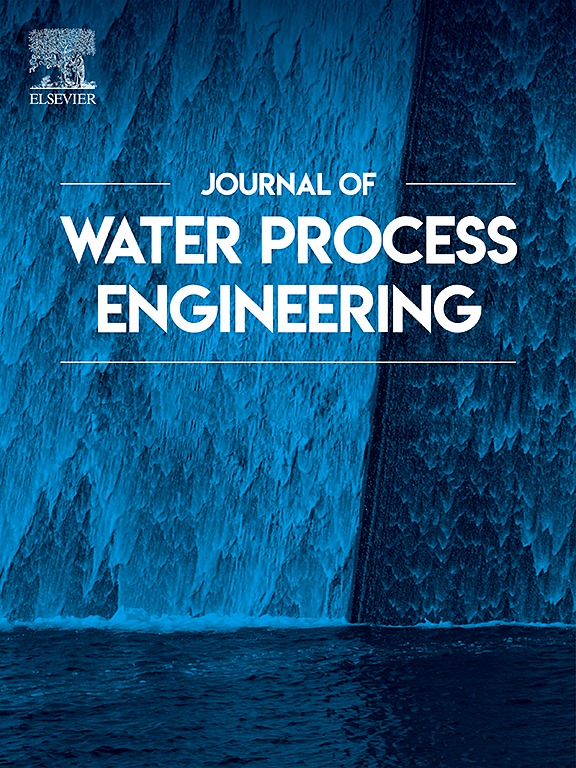Mesocosm constructed wetlands for tetracycline-stressed effluent treatment: Evaluating substrate and vegetation synergies
IF 6.3
2区 工程技术
Q1 ENGINEERING, CHEMICAL
引用次数: 0
Abstract
Tetracycline (TC) in treated wastewater poses considerable environmental risks. Constructed wetlands (CWs) are crucial for mitigating TC contamination and enhancing wastewater treatment. This study evaluated the performance of three mesocosm CWs, each planted with different emergent macrophytes, under exposure to 1 mg/L TC. Results revealed notable improvements in feeding tailwater quality, with removal rates of total nitrogen, total phosphorus, and chemical oxygen demand ranging from 30 to 40 %, 80–85 %, and 20–25 %, respectively. Nitrate removal primarily occurred through plant absorption. After 81 days, Typha orientalis C. Presl in CW-B achieved the highest biomass (1962.9 g/m2), demonstrating superior carbon sequestration potential compared to Canna indica L. and Phragmites australis. The rhizosphere bacteriome of Phragmites australis and Typha orientalis C. Presl showed greater efficacy in removing NH4+-N, while that of Canna indica L. was more effective in removing NO3−-N, TN, and TP. These findings highlight the pivotal role of CW vegetation in contaminant removal and carbon sequestration, emphasizing the synergistic interactions among substrate, vegetation, and rhizosphere microbiota in treating secondary effluent under TC stress.

求助全文
约1分钟内获得全文
求助全文
来源期刊

Journal of water process engineering
Biochemistry, Genetics and Molecular Biology-Biotechnology
CiteScore
10.70
自引率
8.60%
发文量
846
审稿时长
24 days
期刊介绍:
The Journal of Water Process Engineering aims to publish refereed, high-quality research papers with significant novelty and impact in all areas of the engineering of water and wastewater processing . Papers on advanced and novel treatment processes and technologies are particularly welcome. The Journal considers papers in areas such as nanotechnology and biotechnology applications in water, novel oxidation and separation processes, membrane processes (except those for desalination) , catalytic processes for the removal of water contaminants, sustainable processes, water reuse and recycling, water use and wastewater minimization, integrated/hybrid technology, process modeling of water treatment and novel treatment processes. Submissions on the subject of adsorbents, including standard measurements of adsorption kinetics and equilibrium will only be considered if there is a genuine case for novelty and contribution, for example highly novel, sustainable adsorbents and their use: papers on activated carbon-type materials derived from natural matter, or surfactant-modified clays and related minerals, would not fulfil this criterion. The Journal particularly welcomes contributions involving environmentally, economically and socially sustainable technology for water treatment, including those which are energy-efficient, with minimal or no chemical consumption, and capable of water recycling and reuse that minimizes the direct disposal of wastewater to the aquatic environment. Papers that describe novel ideas for solving issues related to water quality and availability are also welcome, as are those that show the transfer of techniques from other disciplines. The Journal will consider papers dealing with processes for various water matrices including drinking water (except desalination), domestic, urban and industrial wastewaters, in addition to their residues. It is expected that the journal will be of particular relevance to chemical and process engineers working in the field. The Journal welcomes Full Text papers, Short Communications, State-of-the-Art Reviews and Letters to Editors and Case Studies
 求助内容:
求助内容: 应助结果提醒方式:
应助结果提醒方式:


